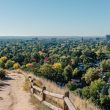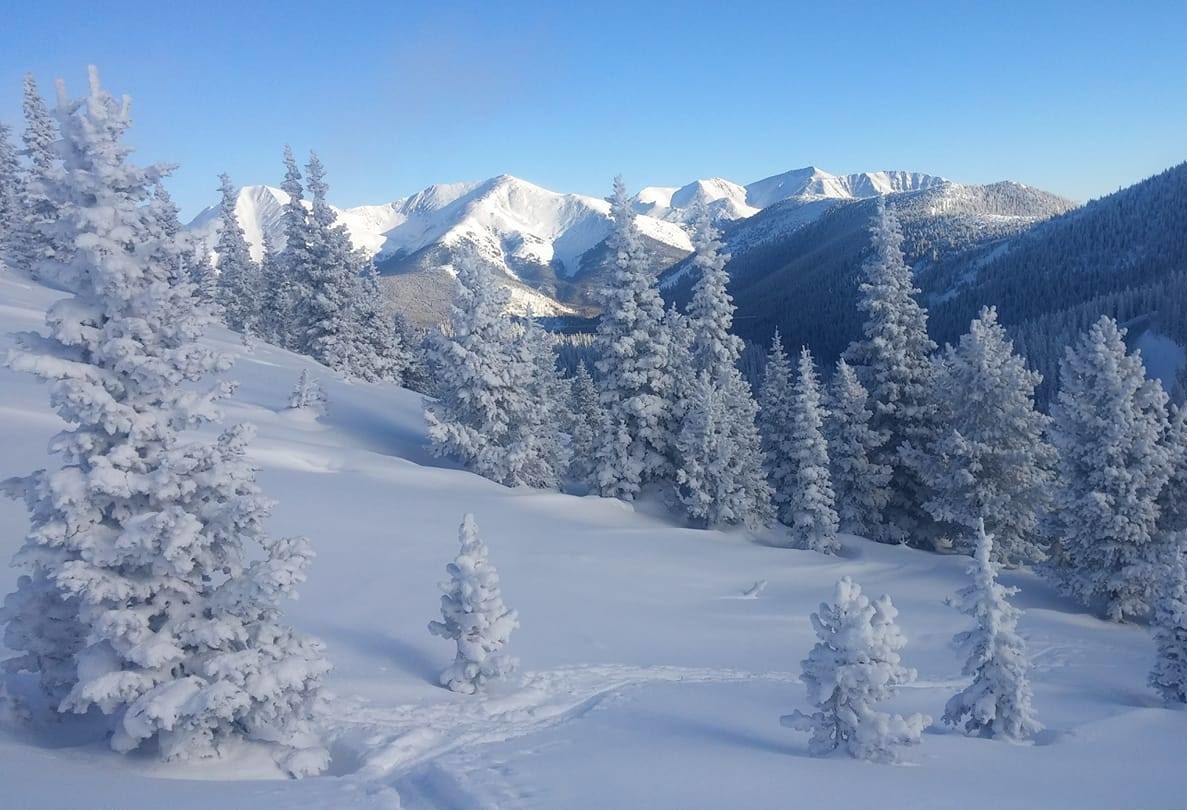If you think your hiking days are over until spring, think again. Colorado is full of easy-to-find and well-marked snowshoe trails, so you can get your hiking fix, see the mountains in a new perspective and avoid the summer crowds. We’ll help you get started, then list our favorite snowshoe hikes. This is your ultimate guide to exploring winter terrain on foot – just with feet that are a bit bigger than you’re used to.
Getting Started

One thing that deters people from snowshoeing is the hassle of renting gear. For anyone that’s ever tried to rent ski or snowboard gear, this is a legitimate concern. Luckily, renting snowshoes is much easier and cheaper. A quick google search will often yield convenient and cheap places to rent snowshoes near where you plan to hike—like this coffee shop in Nederland. If you snowshoe in Rocky Mountain National Park, Estes Park Mountain Shop will lend you snowshoes for a whopping $5.
If you’d rather rent ahead of time, outdoor gear retailers like REI and Wilderness Exchange also rent out snowshoes. Keep in mind however that these will likely be more expensive than they would be in local mountain shops. And of course, if you plan to do a lot of snowshoeing in the future, investing in your own pair might be a good idea.
Keep in mind that while snowshoeing if fairly easy to learn, it is generally much more tiring than hiking. Think of the differences between walking on pavement and walking through sand, then add big, bulky footwear. You’re going to feel fatigued much sooner than you would hiking the same trail in the summer. So start small on mileage and work your way up as you gauge your abilities.
As far as safety goes, you’re going to want to be a bit more cautious than you might be in the warmer months. Check the weather for any storms, and be sure to avoid them, as you could lose the trail in bad weather. Set out in groups, and stay within everyone’s physical limit. Bring a hard copy of a map, and let someone back home know when they should expect you to be back. Also, remember to dress for the cold, snowy weather. While you may not wear as many layers as you would when skiing, there are more clothing items to remember than when going for a warm-weather hike, and forgetting something like gloves can make for an uncomfortable trip. For example, on a sunny winter day, you’ll want snow pants and a snow jacket, but a light base layer should suffice. Bring a backpack for water and snacks, but also as a place to store additional layers – hat, gloves, extra top layer, etc.–that you may want to take on and off throughout the day.
1. Bear Lake Loop
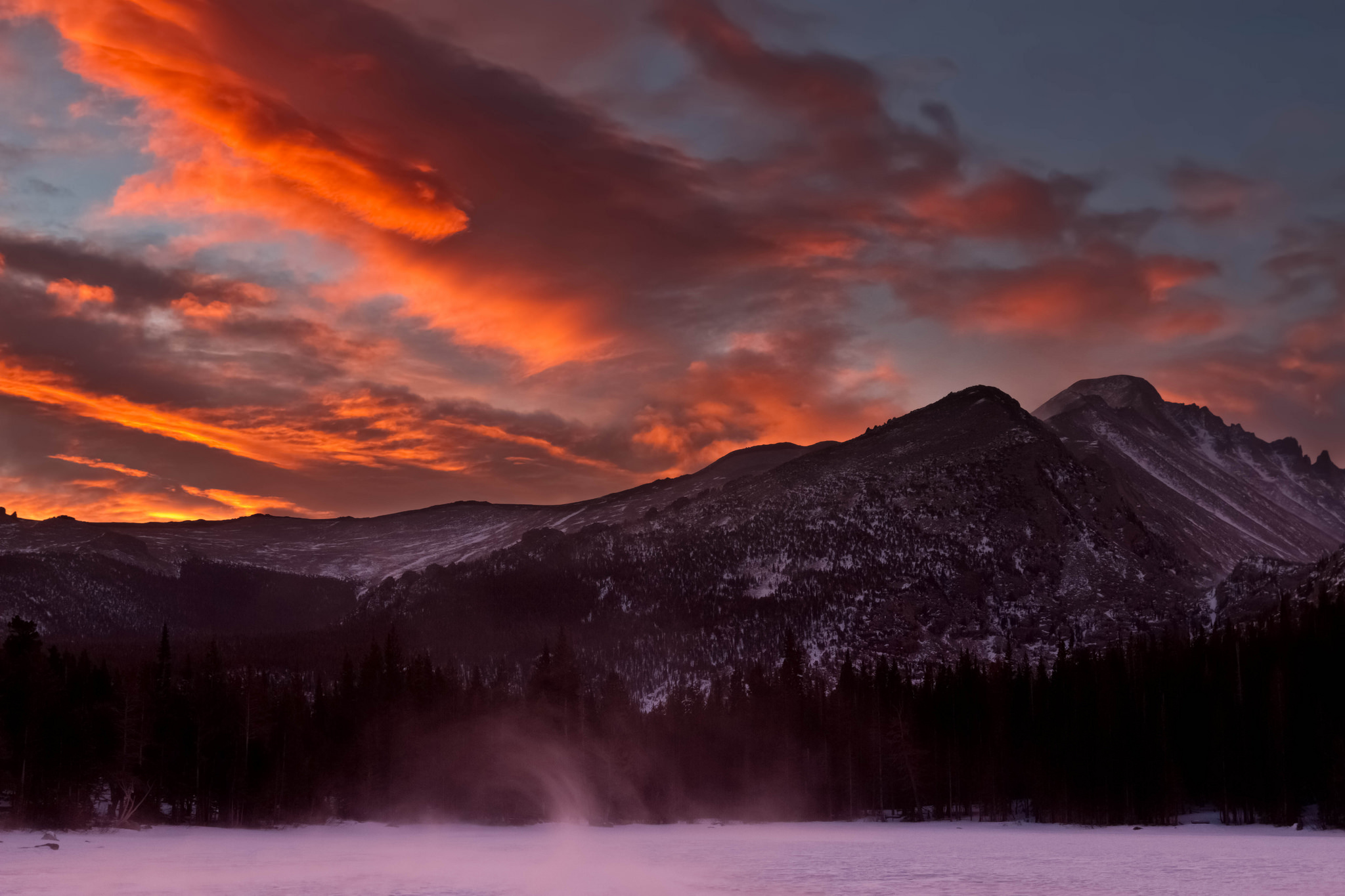
Location: Rocky Mountain National Park
Distance: 0.8 miles
Difficulty: Easy
Why we love it: Looking for something simple just to get your feet wet in the snowshoeing world? Bear Lake is your place. You may have seen it as a walk in the park in the summer, but it’ll only take a few steps before you realize snowshoeing is a lot more tiring. Try it out, then hit one of the nearby trails if you’re up for it afterwards. Either way, Bear Lake is a beautiful loop, especially in the snow.
2. Dream Lake
Location: Rocky Mountain National Park
Distance: 2 miles
Difficulty: Easy
Why we love it: Dream Lake is an easily accessible and well-trafficked trail, so you have a solid collection of footprints to follow, as well as plenty of signs to guide you. Starting at the Bear Lake trailhead, grab a map and follow signs to Nymph Lake, then Dream Lake. The lake is lovely in the summer, but we think it’s dreamier when frozen.
3. Lost Lake
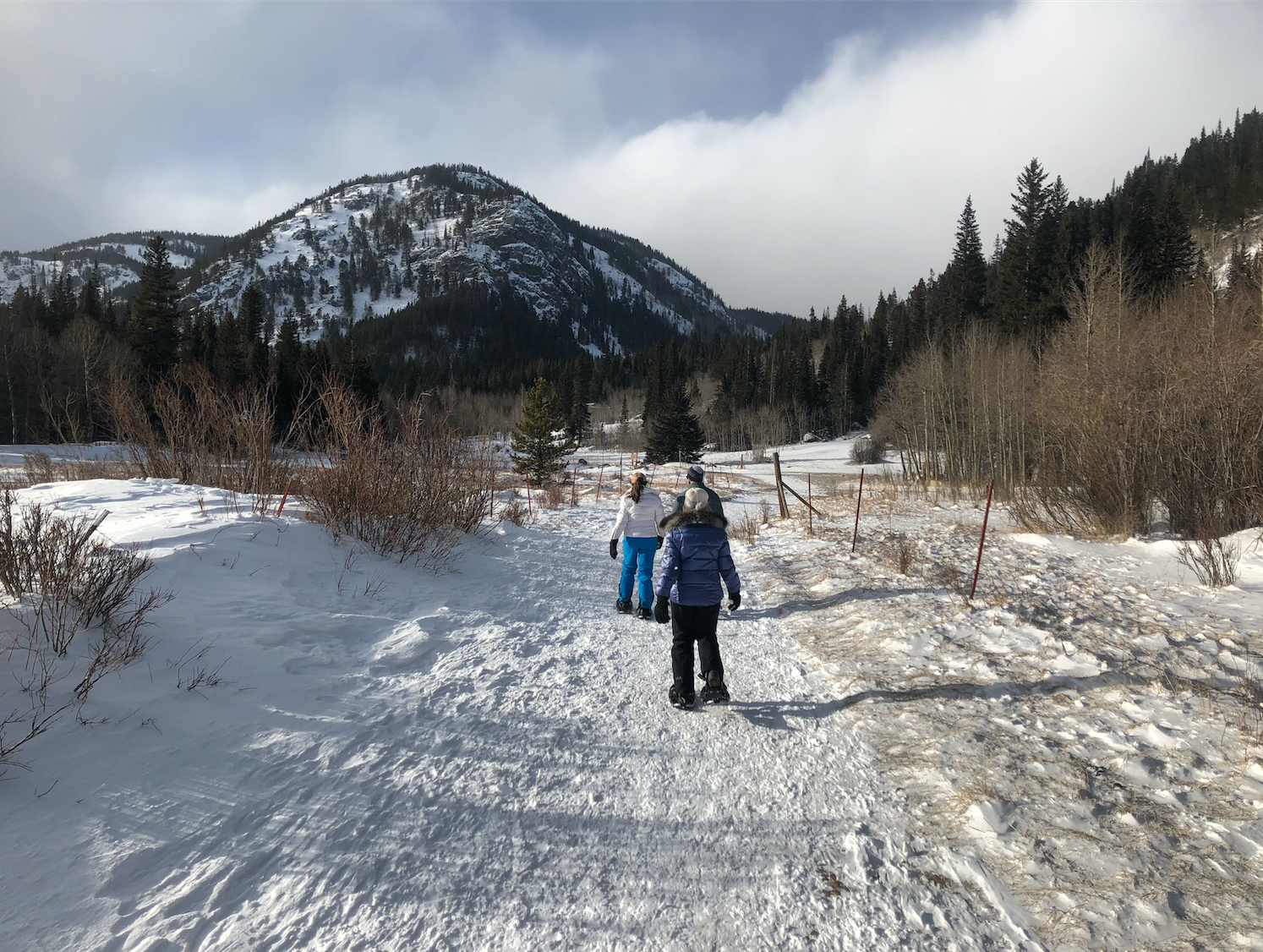
Location: Hessie Trailhead, Nederland
Distance: 4.1 miles
Difficulty: Moderate
Why we love it: The surrounding area of Nederland is snowshoe paradise, but Lost Lake is our favorite. Start on the Hessie Trailhead, which is close to town — and to the coffee shop that rents snowshoes. Then follow signs for Lost Lake as you head into Indian Peaks Wilderness.
4. Mayflower Gulch
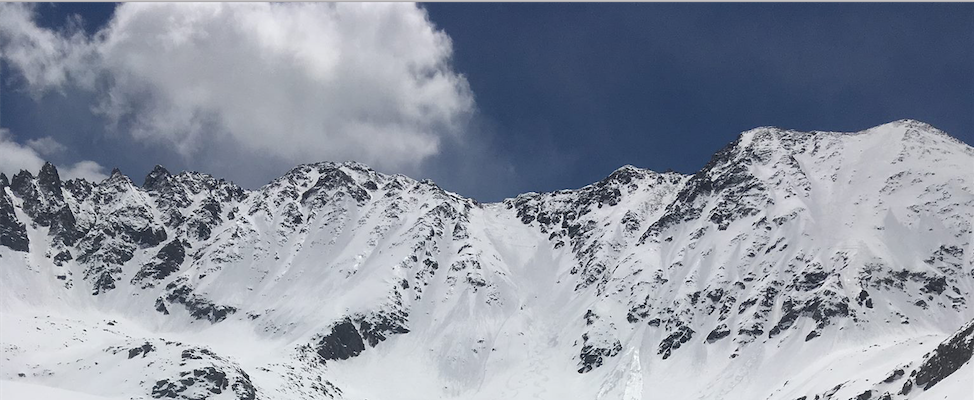
Location: Near Copper Mountain
Distance: 5.9 miles if you hike the ridgeline, 3.6 to the ghost town
Difficulty: Hard
Why we love it: This is an especially clear path, marked by trees on both sides and making it great for snowshoeing. The tree-lined path ends at an opening that puts you in the base of a jaw-dropping mountain scene and a few ghost town remains. Continue up the ridgeline if you’re feeling adventurous for even better views.
5. Brainard Lake Snowshoe Trail
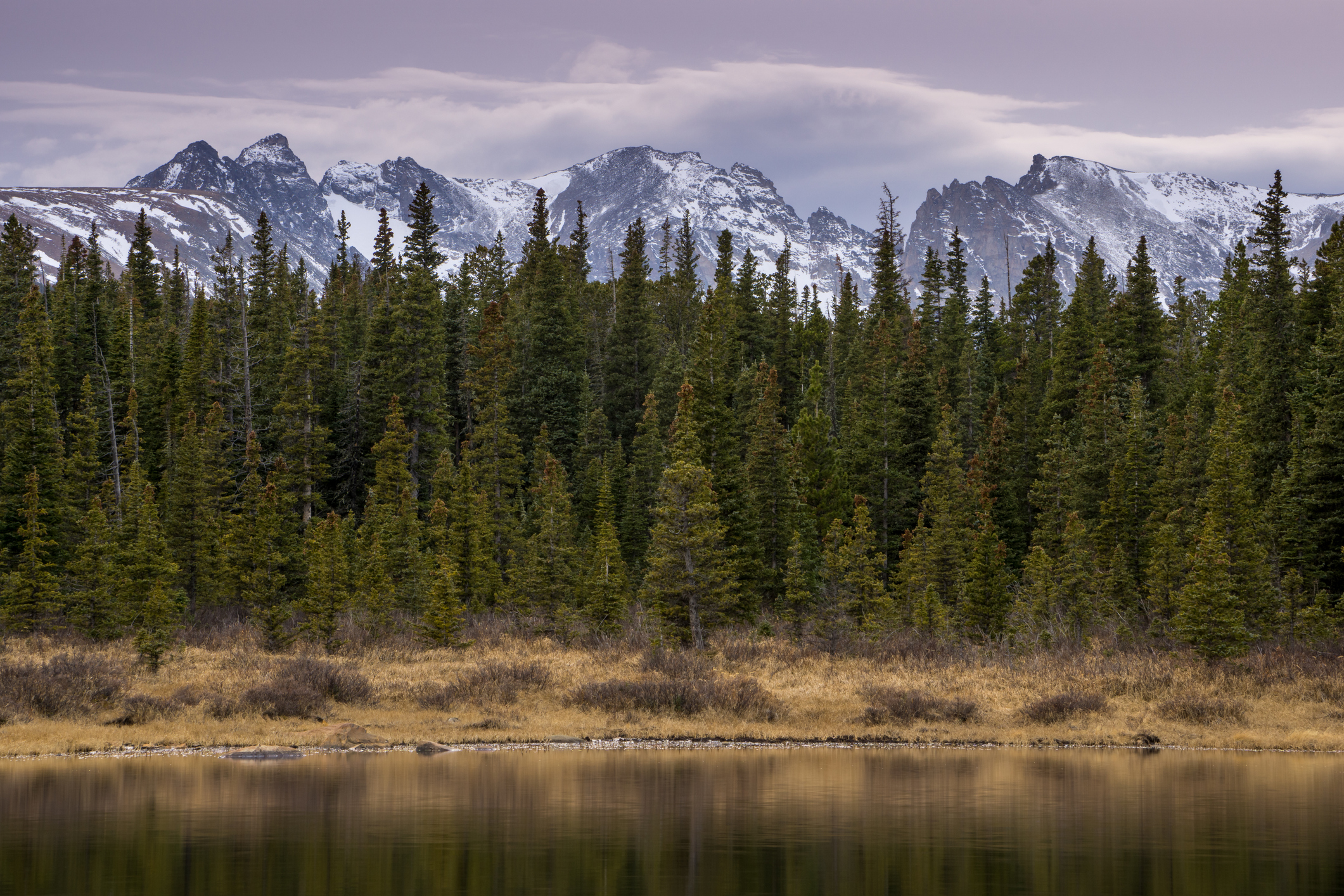
Location: Brainard Lake Recreation Area
Distance: 4.8 miles
Difficulty: Moderate
Why we love it: As a designated snowshoe trail, this is a very well marked trail that uses tree blaze markings. The trail winds through the woods and around two small, before passing Brainard Lake. The trail ends with a view of the Continental Divide.
6. Old Monarch Pass
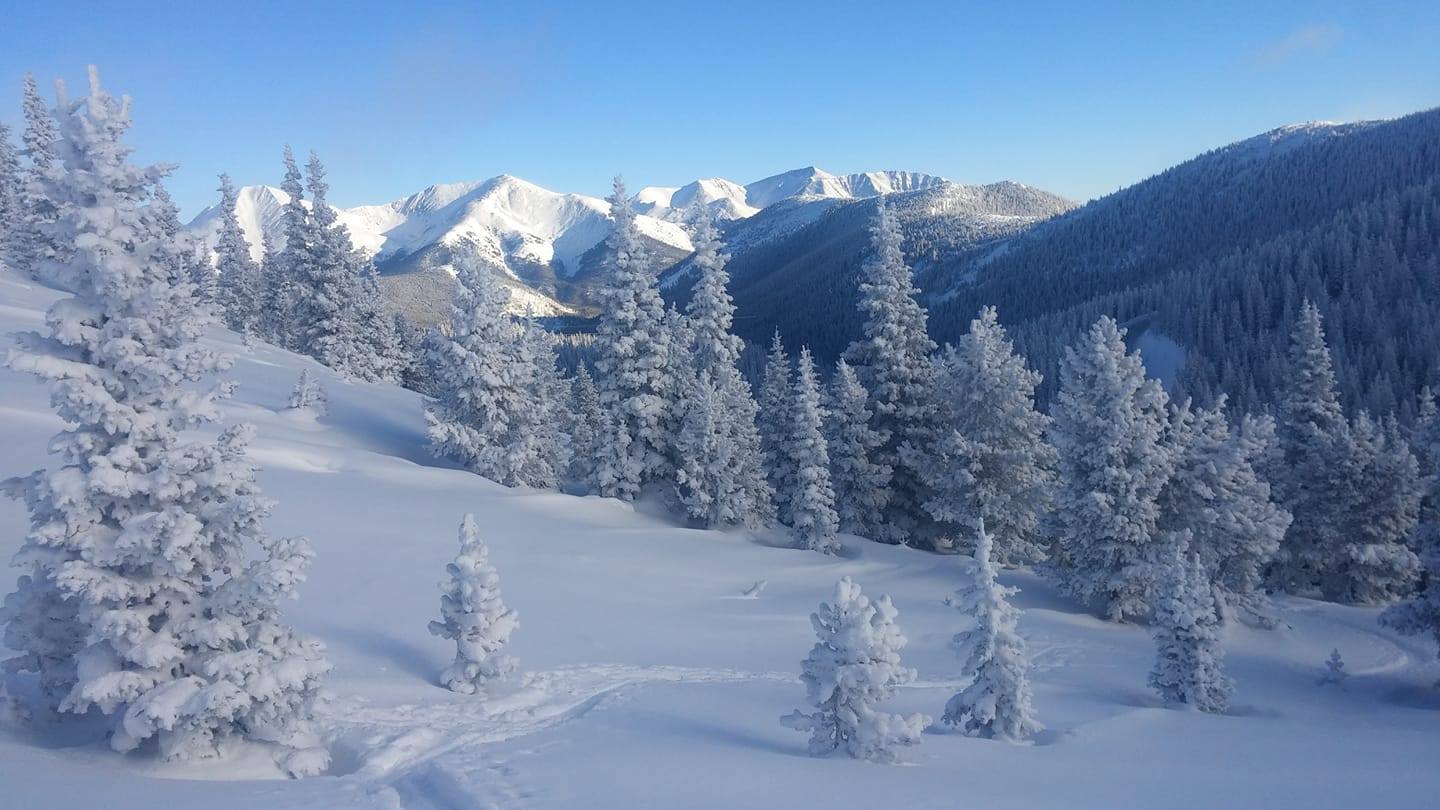
Location: Salida
Distance: 3 miles
Difficulty: Moderate
Why we love it: This is perfect for hikers looking to cross into snowshoeing. The trail has lots of different terrains to test out your skills on, but isn’t too difficult. Plus, it’s a relatively short hike for a pass with incredible views.
7. Echo Lake

Location: Idaho Springs
Distance: 1.3 miles
Difficulty: Easy
Why we love it: This is a short drive from Denver is a smooth, flat hike. The path buts up to the base of Mount Evans, giving you a great view of the mountain. And if you haven’t noticed, we like frozen lakes.



